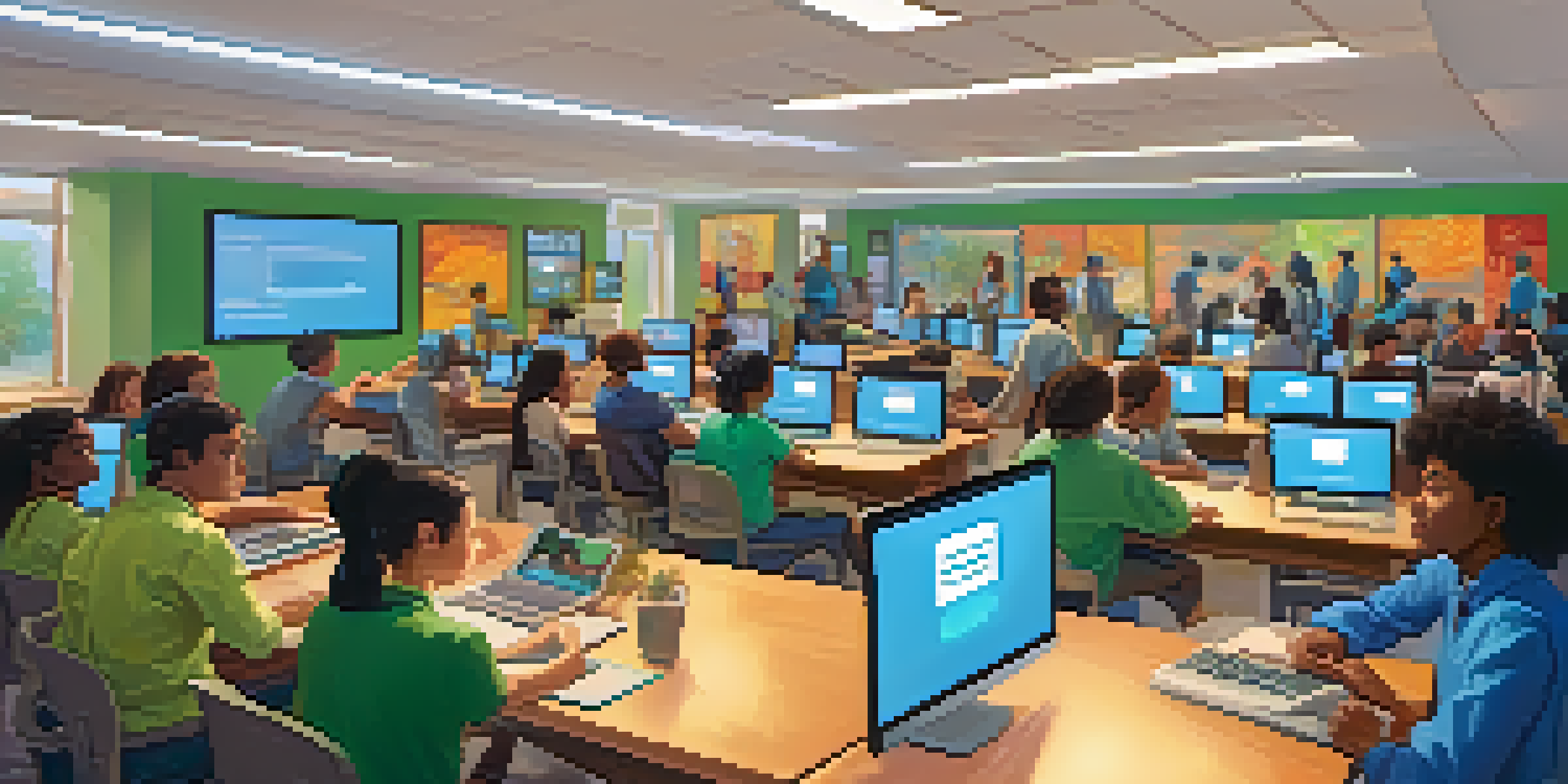The Benefits of Synchronous Learning in Online Communities

Understanding Synchronous Learning in Online Communities
Synchronous learning refers to real-time interaction between instructors and learners, creating a dynamic learning environment. Imagine sitting in a virtual classroom where everyone participates simultaneously, just like a traditional classroom but online. This format allows for immediate feedback and fosters a sense of community, making learning more engaging and interactive.
Enhanced Engagement Through Real-Time Interaction
One of the primary benefits of synchronous learning is the high level of engagement it promotes. When learners interact in real time, they are more likely to participate actively, ask questions, and share their thoughts. This immediate connection can lead to deeper discussions and a richer educational experience, much like a lively debate among friends.
Real-Time Interaction Enhances Learning
Synchronous learning fosters immediate engagement and feedback, creating a dynamic educational experience.
Building a Sense of Community and Belonging
Synchronous learning helps cultivate a strong sense of community among participants. When learners engage together in real time, they form connections that might not develop in asynchronous settings. This sense of belonging can be incredibly motivating, as students feel like they are part of something larger than themselves, similar to being part of a team working toward a common goal.
Immediate Feedback and Support for Learners
In a synchronous learning environment, students can receive instant feedback from their peers and instructors. This immediate support is invaluable, as it helps learners identify areas for improvement and celebrate their successes in real time. Picture a coach guiding you during a game—you get tips and encouragement right when you need it.
Building Community and Belonging
Engaging together in real time helps learners form connections and feel part of a supportive community.
Flexibility and Accessibility in Learning
Synchronous learning can be more flexible than traditional classroom settings, allowing participants to connect from anywhere in the world. This accessibility opens doors for individuals who may have otherwise faced barriers to education, such as geographic limitations or scheduling conflicts. Imagine being able to attend a class in New York while sitting in your living room in California!
Fostering Collaboration and Teamwork Skills
Through synchronous learning, students often engage in collaborative projects or discussions that enhance their teamwork skills. Working together in real-time encourages learners to communicate effectively, share diverse perspectives, and solve problems collaboratively. It’s like being part of a group project where everyone contributes to a shared vision, ultimately preparing students for the collaborative nature of the workplace.
Flexibility and Accessibility in Learning
Synchronous learning allows participants to connect from anywhere, breaking down barriers to education.
Increased Accountability and Motivation
The live nature of synchronous learning can boost students' accountability and motivation. Knowing that peers and instructors are present encourages participants to stay engaged and complete assignments on time. It's akin to showing up for a workout class; the commitment to others can push you to put in that extra effort and stay on track.
Conclusion: The Future of Learning in Online Communities
As we embrace more digital learning environments, the benefits of synchronous learning become increasingly evident. It not only enhances engagement and collaboration but also fosters a strong sense of community among learners. By investing in synchronous online learning, we can create vibrant educational experiences that prepare individuals for success in an ever-evolving world.